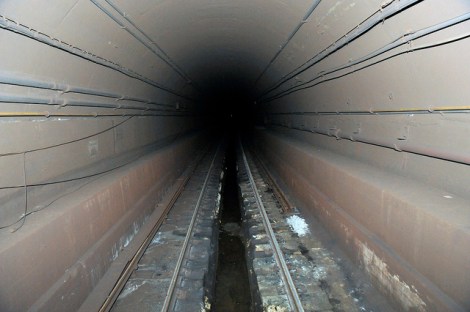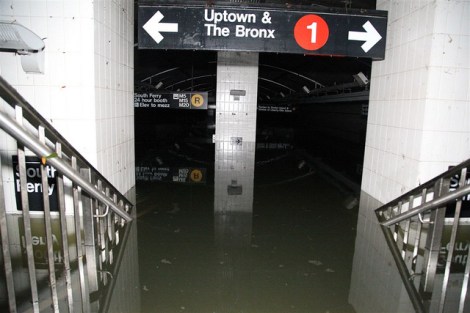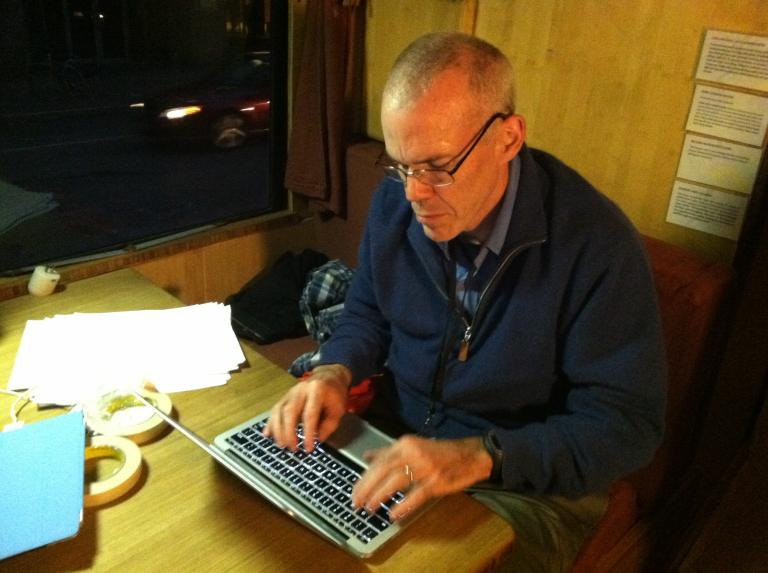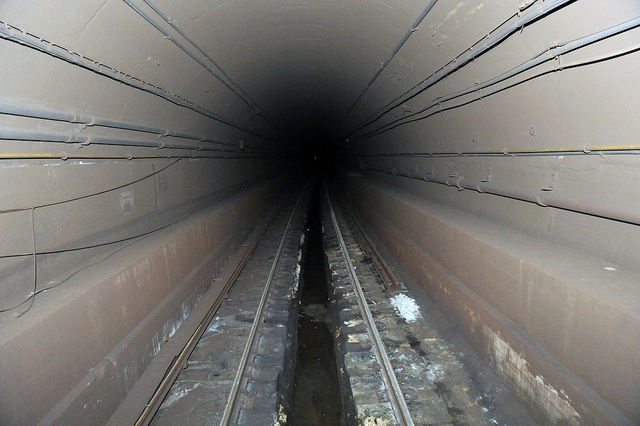
MTAPhotosAn empty, dry tunnel under the East River.
On a normal day, New York’s subway system is magical. That the largest city in the United States, one of the densest and tallest places on Earth, should have running beneath it an intricate, extensive series of tubes linked at various places to the surface is an achievement we rarely reflect upon. Right now, as they have been for months, crews are digging a new tunnel along Second Avenue, a brand new subway line, under homes and stores and businesses like it’s just the regular way things are done.
Public transit is never simple, but when it’s done elegantly and well, it seems like simplicity incarnate. Go down, get on the train, get off where you wanted to be.
Sandy shook that. For a week, the subways were soaked and silent. For the first two days after the storm, New Yorkers were immobile. But only for two days. What happened next, as the head of one riders’ advocacy group told the Times, “borders on the edge of magic.”
It has been less than two weeks since the most devastating storm in the New York City subway system’s 108-year history. Seven tunnels beneath the East River flooded. Entire platforms were submerged. Underground equipment, some of it decades old, was destroyed.
The damage was the worst that the system had ever seen. And yet, the subways have come back — quicker than almost anyone could have imagined.
The Times article outlines how that happened, focusing on the Metropolitan Transit Authority’s head, Joe Lhota, and his agency’s preparations for and response to unprecedented flooding.
At some points, the story — which you should go read immediately — reads like a disaster movie.
At the same time, Joseph Leader, the subway’s chief maintenance officer, went into South Ferry. No one knew the barriers outside the station had given way, Mr. Leader said, breached apparently by 15-foot hunks of wood that, late last week, remained strewed across the mezzanine, beside the turnstiles.
As he lurched into the terminal, the water had already risen over the platform. When it began climbing the stairs, Mr. Leader fled. He made his way on foot toward the darkened loop track, approaching Rector Street, training his flashlight ahead. “You could just see it rising, coming up the tracks,” he said. “I realized, I can’t stay here much longer.”

MTAPhotosThe South Ferry subway station, submerged.
The most remarkable part of the story is how the MTA recovered. Bus bridges — impromptu routes using city buses — were the first response, even as trains began running limited routes.
Test trains began running partial routes on Wednesday. But with power still out in Lower Manhattan, no trains could run between Manhattan and Brooklyn. If not for the power loss, officials said, the No. 4 and 5 trains could have very likely returned during the week. …
Charles Gordanier, the authority’s chief map designer, began drafting changes to the old subway map, fading out the lines that were without service. Copies were released to the public on Wednesday, and have since been updated as service is restored.
The bus bridges created winding lines and widespread gridlock, resulting from a simple math problem, Mr. Prendergast said: Between 1,500 and 2,000 people can pile into a train. A bus can fit no more than 75 or so.
Accordingly, connecting the boroughs by subway was the next priority. Late Friday, as the power returned, officials were confident they could restore full service to some trains, like the Lexington Avenue line and the No. 7, almost immediately. By Saturday morning, they had, and several other connections between boroughs followed.
(Transportation Nation has a nice profile of how Gordanier made the constantly updated maps.)
Service is still not back completely. But given the apocalyptic predictions that preceded the storm, the amount of progress made has been almost incredible.
Last night, I jumped on the downtown 2 express train into lower Manhattan. It wasn’t until I got off at Chambers Street that I remembered that the journey had been amazing, something that a week and a half ago would have been a privilege. Riding it as usual, it was just another subway trip, unremarkable. Simple.
Magic in plain sight.




